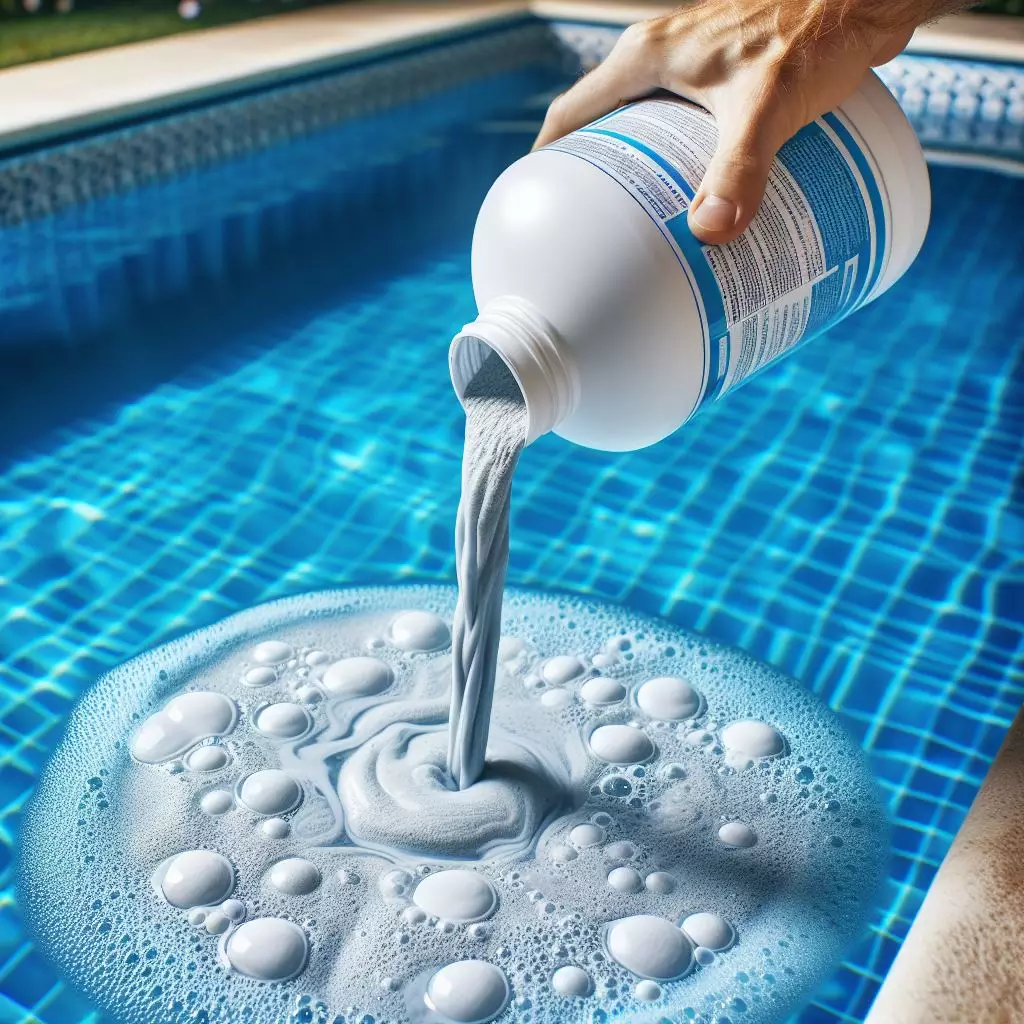Maintaining pool cleanliness is a crucial step in ensuring water quality and safety. Among various maintenance strategies, using a flocculant is an effective way to remove suspended particles from the water. Flocculants work by aggregating tiny particles into larger clumps that can be more easily captured by the filtration system, making them a common chemical treatment used to improve the clarity of pool water. However, the effectiveness of flocculants is influenced by many factors, with the pH level of the water significantly affecting their performance. This article will explore the differences in the action of pool flocculants in different pH environments.

Basic Function of Flocculants
Pool flocculants are typically aluminum or iron-based compounds, such as aluminum sulfate or ferric chloride. These chemicals neutralize the negative charge on the surface of particles (such as dirt, bacteria, and other microorganisms) in the water, causing them to clump together into larger aggregates that can then be effectively removed by the pool’s filtration system. This process not only clears turbidity from the water but also helps eliminate potential health risks caused by bacteria.
The Impact of pH on Flocculant Effectiveness
Acidic Environment (pH below 7)
In acidic conditions, the aluminum or iron ions in flocculants are more likely to form a dissolved ionic state, which may reduce their ability to bind with particles in the water. Therefore, the flocculation effect might not be as significant as in neutral or slightly alkaline environments. Additionally, acidic conditions could lead to partial decomposition of the flocculant, thus reducing its cleaning efficacy. Therefore, before using flocculants in acidic pool water, it is usually necessary to adjust the pH to near neutral to ensure optimal results.
Neutral Environment (pH around 7)
Flocculants generally perform best in a neutral environment, where the pH is close to 7. At this pH level, the active components of the flocculant can effectively bind with the particles in the water, forming large precipitates that are easily captured and removed by the filtration system. This helps rapidly improve water clarity and reduce turbidity.
Alkaline Environment (pH above 7)
In alkaline conditions, the effectiveness of flocculants is also influenced by the pH value. When the pH is too high, the metal ions in the flocculant may form insoluble compounds, which, although beneficial for particle aggregation, excessive metal ion precipitation can lead to an increased burden on the filtration system and even clog the equipment. Thus, appropriately controlling the pH to be slightly alkaline can usually achieve good cleaning results while avoiding damage to the system.
Flocculant Usage Strategy
In practice, proper management of pH values is crucial for ensuring the effectiveness of flocculants. Maintenance teams should regularly test the water’s pH and adjust it according to the type of flocculant used and the specific needs of the pool. Generally, maintaining a pH range of 6.5 to 7.5 can optimize flocculation effects while minimizing potential damage to pool facilities.
Additionally, ensuring the normal operation and maintenance of the filtration system during the use of flocculants is very important. This includes regular cleaning and inspection of the filters to prevent a decline in efficiency or damage due to processing large amounts of sediment.
Conclusion
The effectiveness of pool flocculants varies significantly in different pH environments. By properly regulating the pH of the pool water, not only can the cleaning effect of the flocculant be maximized, but the lifespan of the filtration system can also be extended, and the long-term stability of the pool water quality maintained. Therefore, maintenance teams need to closely monitor water quality parameters during the use of flocculants to ensure optimal water treatment results.
